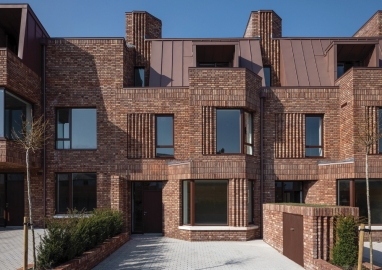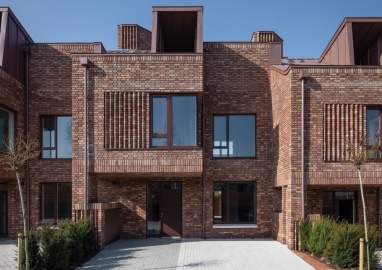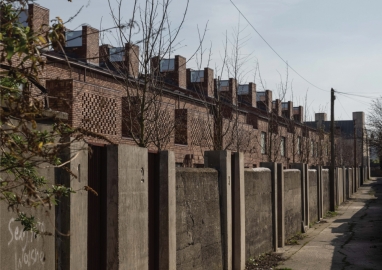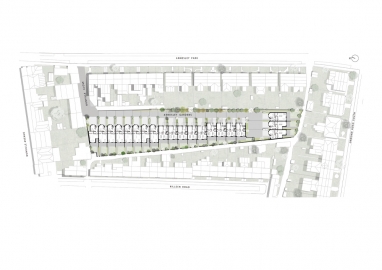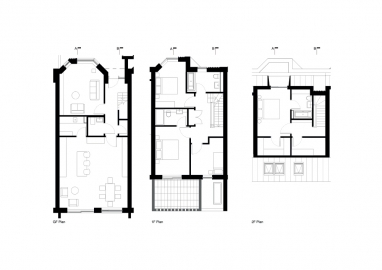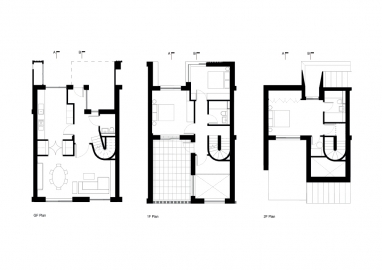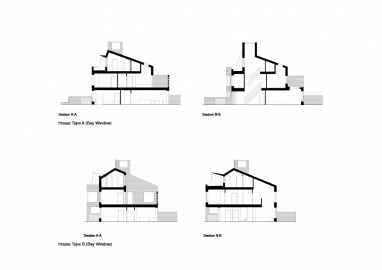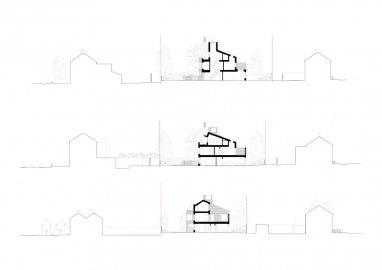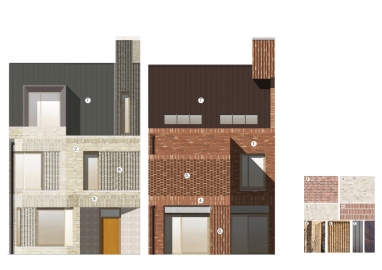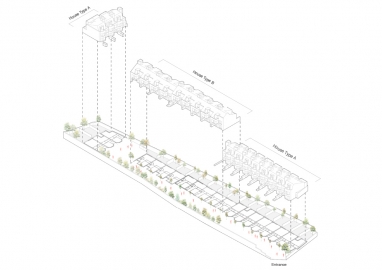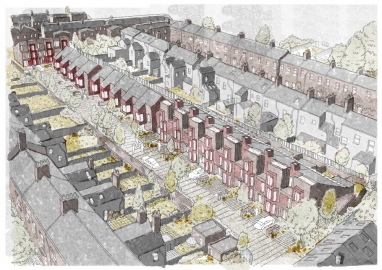Annesley Gardens
Annesley Gardens transformed a backland site into a residential street of 20 homes. Located in an architectural conservation area the contemporary architecture successfully integrates into the sensitive context not only in terms of its scale but also in its expression and brickwork detailing influenced by the surrounding Victorian architecture.
Annesley Gardens is situated on a back-land site overlooked on all sides by Victorian Houses. The site is very well served with a tram stop, shops and cafes all located nearby. Vehicular access to the site is via an existing laneway and each house has rear pedestrian access via a laneway along the perimeter.
While a number of different approaches were explored to designing homes on the site, the proposed street of terraced houses was deemed to be the most appropriate strategy given the sensitive nature of the surrounding context. The design of the new terraced street accommodates two key house types, each responsive to the peculiarities of the site with individual variances. The architectural expression takes its cue from the surrounding terraces. Panels of patterned brick including stack bonded soldier courses and fluted elements reflect existing decorative brick patterns.
The rich architectural context had a very strong influence on every aspect of the design from the site strategy, to the individual homes, to the architectural detailing. The proposal to create a new street of 2-3 storey homes emerged as the preferred approach as it provided the best opportunity to respond to the challenges of the overlooking and privacy issues posed by the surrounding existing neighbours.
The design of the houses emerged from a deep reading of the context and as a response to the unique peculiarities of the site. The result is two house types, one with a projecting bay window and the other with a cantilevered first floor over a deeply recessed entrance, the result is a regular rhythm of solid and void along the street. The individual home within the terrace is further articulated through the use of recessed entrance thresholds, dormer roof windows and individual ‘light chimneys’ which bring light deep into the heart of the plan. The rear of the houses have been sculpted in response to the relationship to their opposing neighbour, ensuring privacy for existing and new residents. The result is a variety of set-backs and brick screened first floor roof terraces.
The external expression emerged from studying the surrounding Victorian architecture and translating this into a contemporary architectural language. The primary material used was brick with two colours selected to reflect the brickwork of the front and rear of the surrounding houses. The traditional detailing was reinterpreted resulting in large areas of sawtooth brickwork, a range of brick bonds and perforated brickwork screens creating a variety of textures and adding depth and interest to the facades. The finish of windows and roofs were selected to complement each brick colour.
The project was constructed by a local construction company using conventional construction methods. The structure consists of solid masonry cavity walls , timber posi-joists for the floor structure with some steel required to support cantilevers and corner windows. The pitched roofs with dormer windows were constructed in solid timber and finished with ventilated standing seam zinc. The homes comply with the Irish sustainability regulations, achieving a Building Energy Rating of A2, by having a highly insulated external fabric along with a highly efficient heat pump.


